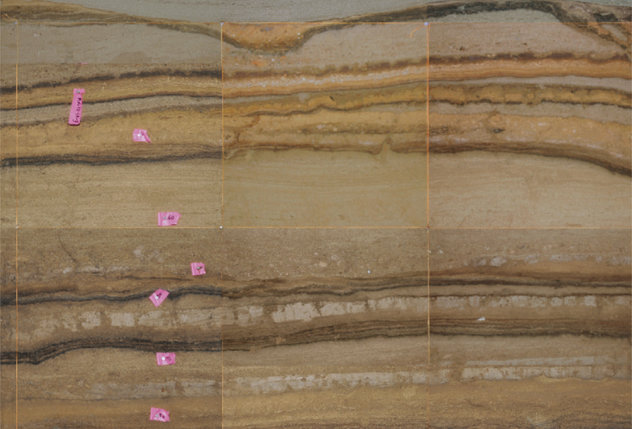
PHOTO: Seeker
Historical records aren’t always on paper. Sometimes, they’re written in stone.
The Indian Ocean earthquake of 2004 was the third-largest tremor ever recorded on a seismograph. It scored a 9.1 on the Richter scale, and was so strong that it caused the entire planet to vibrate by as much as 0.4 inches. The quake caused tsunamis that killed over 280,000 people in fourteen separate countries. Some coastal communities were hit with waves one-hundred feet tall.
After the 2004 disaster, a team of scientists led by Charles Rubin and Benjamin Horton have been investigating earthquakes and tsunamis in Sumatra. This year, they excavated a sea cave, and they’ve found something incredible.
An Unique Record Written In Stone
“As we stopped by the entrance to the cave, our first excavations did not show anything interesting,” Horton said, “At this point, we returned for headlamps and excavation gear to explore the interior of the cave.”
“After about fifteen minutes of excavations, it was clear to me, Rubin, and Daly that we exposed a series of ‘stacked tsunami’ deposits…We quickly realized that we had found a quite extraordinary record of tsunamis that stretched back thousands of years.”
The find was published in the journal Nature Communications. It’s one of the longest and most detailed records of tsunami and quake activity ever recorded. The record stretches back 5,000 years, and shows eleven separate tsunamis, including the tsunami that hit Sumatra in 2004.

PHOTO: seeker.com
These layers of sediment are the clearest record of tsunami activity from anywhere in the world. It matches other similar tsunami sediment layers such as beds laid down by the 2004 disaster. All of the layers consist of fine-grained sand, shale and mudstone, cave chalk, and the remains of tiny marine animals.
Using radiocarbon dating, they were able to date each layer, giving them a disaster pattern they could read like a book.
Historical records like this one are immensely important to our understanding of tsunamis and earthquakes – a science that is still being perfected.
Here’s what scientists know about how tsunamis happen:
Tsunami records like the one found in Sumatra help scientists learn more about how and why earthquakes and tsunamis happen in certain parts of the world. The one in Sumatra is particularly valuable because it’s so long.
Rubin and his team believe that the Sunda – or Sumatra – Megathrust is the source of earthquakes and tsunamis in this part of the world. As for what the different sediment layers in the cave tell him, he says there are two main things we can learn from his research.
First, earthquakes seem to tend to cycle from large to smaller events.
“The closely spaced tsunamis perhaps represent temporal clustering of earthquakes that produced tsunamis,” Rubin explained, “It seems that earthquakes during this period are separated by just a few decades.”
At one point in history, though, some 2,000 years went by without a single major tsunami. Then, the record shows that an enormous natural disaster happened after that. During those 2,000 years of silence, pressure built up, leading to an even bigger natural disaster.
Second, the varied history of the tsunami record suggests that scientists ought to create hazard plans based on the likelihood of destructive tsunamis, rather than try and estimate an interval for how often a tsunami might hit. According to their research, no such estimate is truly possible. The record show that big tsunamis varied in recurrence time from 60 years to 2,000 years.
Rubin and his team will continue to work on the site, hoping to glean more information about how and why tsunamis and earthquakes happen, and how we can better prepare for them in the future.
“We continue to work on the cave to estimate the power of the tsunami waves that flooded the cave over the last 8,000 years.” – Charles Rubin.

